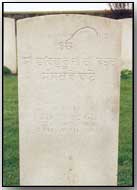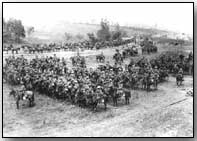With the outbreak of war in Europe, India, the Crown Jewel of the British Empire, joined the Allies in battle on the 4th of August 1914.
Contributing the most volunteers of any of the British imperial holdings that fought in the war, India produced between 900,000 to 1.5 million troops for combat by 1919. Of these troops, the Sikhs, one of the two loyal 'martial races' of the British Raj, rallied in enormous numbers for the King, Empire, and the defence of Europe.
At the beginning of the war, Sikh military personnel numbered around 35,000 men of the 161,000 troops of the Indian Army, around 22% of the armed forces, yet the Sikhs only made up less than 2% of the total Indian population. By the end of the war 100,000 Sikh volunteers joined the British Armed forces with a few Sikhs also contributing to the French Air Service and the American Expeditionary Force.
It is also said that some Sikh POWs, captured in Belgium, were believed to have been Muslims by the Germans and taken to Turkey to fight along side their fellow 'Mohammedans'. However, they still remained loyal to the British Crown and escaped on a long trek to the British posts in Afghanistan, from Turkey through the Middle East, to once again fight under the British flag.
 Though being paid a mere 11 rupees a month for his services to the Empire, the Sikh soldier took his duty as a soldier in an almost religious aspect in a romanticized idea of being a martyr and a knight for the King.
Though being paid a mere 11 rupees a month for his services to the Empire, the Sikh soldier took his duty as a soldier in an almost religious aspect in a romanticized idea of being a martyr and a knight for the King.
A Sikh soldier, Indar Singh, fighting on the Somme in September 1916, wrote home:
It is quite impossible that I should return alive. [But] don't be grieved at my death, because I shall die arms in hand, wearing the warrior's clothes. This is the most happy death that anyone can die.
The idea of martyrdom and battlefield heroics proved to be a necessity for the British as they were being pushed back by the Germans time and time again. In fact, the British felt it necessary to nourish Sikh fanaticism by allowing the Sikhs areas to set up temporary Gurdwaras (Sikh Temples), to observe the birthdays of Sikh gurus, to use traditional Sikh weapons (such as Sikh quoits and the sabre), and it was not uncommon to see the Sikh holy book, Guru Granth Sahib, being carried before a marching Sikh battalion or even on the front lines among the battling Sikh troops.
 These 'unique stalwarts from the east,' fought in the battles of Ypres, Flanders, the Somme, Gallipoli, East Africa, Palestine, Egypt / Suez Canal, Mesopotamia, and numerous other battlefields in nearly all theatres of the war.
These 'unique stalwarts from the east,' fought in the battles of Ypres, Flanders, the Somme, Gallipoli, East Africa, Palestine, Egypt / Suez Canal, Mesopotamia, and numerous other battlefields in nearly all theatres of the war.
This article cannot justly commemorate the contribution of these fine warriors who fought disease, filth, gas attacks, and the onslaught of German and Turkish troops and maxim guns with only their turbans to protect them from head wounds and their unshorn hair and long beards, as prescribed by their religious faith, in disease infested, muddy trenches.
The average Indian battalion had around 764 men when they landed in France, but by November 1914, the 47th Sikhs had only 385 men left. In Gallipoli, the 14th Sikhs lost 371 officers and men in mere minutes, and thousands of other Sikhs died in various other encounters such as Neuve Chappelle and the Somme.
The "Black Lions," as the Arabs called them in Mesopotamia, of the Punjab sacrificed their lives for the defence of freedom in Europe for an ally that was ruling their own homeland, yet they did it out of honour and loyalty.
Article contributed by Arjan Singh Flora (sikhkrieger@hotmail.com)
References:
Madra, Amandeep Singh and Parmjit Singh. Warrior Saints: Three Centuries of the Sikh Military Tradition. London: I.B. Tauris & Co Ltd
Madra, Amandeep Singh and Parmjit Singh. Warrior Saints: Three Centuries of the Sikh Military Tradition. London: I.B. Tauris & Co Ltd
British Broadcasting Company. BBC History - World War One.http://www.bbc.co.uk/history/worldwars/wwone/

No comments:
Post a Comment